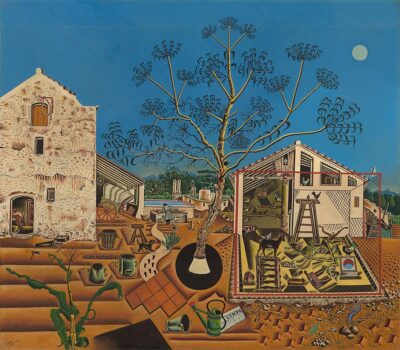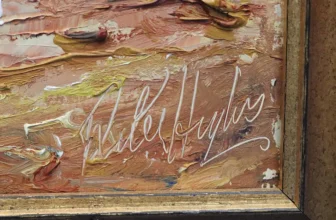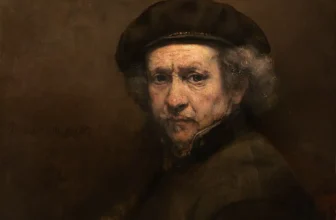What Is “The Farm” Painting All About
In the vast universe of 20th-century modern art, few paintings resonate with such deep personal significance and artistic evolution as The Farm by Joan Miró. Completed in 1923, this masterful work is often hailed as a pivotal piece in Miró’s development as an artist. Combining detailed realism with hints of abstraction and surrealist tendencies, The Farm is more than just a depiction of rural life, it is a symbolic narrative woven with memory, culture, and identity.
This post delves into the story behind The Farm, its meaning and symbolism, the techniques Miró employed, what is happening in the painting, and where it resides today.
The Genesis of “The Farm”: Who Painted It and How
Joan Miró, born in Barcelona in 1893, was a Catalan painter, sculptor, and ceramicist, often associated with the Surrealist movement, though his work transcended strict categorization. Raised in the vibrant and politically tumultuous environment of early 20th-century Spain, Miró developed a style that was deeply rooted in his cultural heritage and personal imagination.
The Farm (La Masia in Catalan) was painted between 1921 and 1922, during a formative period in Miró’s artistic journey. At the time, he was living in Paris, surrounded by avant-garde movements and influential figures such as Pablo Picasso and Ernest Hemingway. Despite being immersed in the heart of European modernism, Miró remained emotionally tethered to his Catalan roots, particularly to the rural family farm in Mont-roig del Camp, a small village in Tarragona, Spain.
Miró began work on The Farm after returning from Mont-roig, where he had spent the summer. It took him nearly nine months to complete the painting, a meticulous process involving detailed observational sketches and countless adjustments. He often described it as a deeply personal painting, saying:
“It was a résumé of my entire life in the country.”
It was both a farewell to a more traditional style of painting and a foreshadowing of his evolving surrealist language.
At first glance, The Farm appears to be a straightforward portrayal of a rustic Catalan farmhouse and its surrounding yard. But closer inspection reveals a universe bustling with detail, symbolism, and a dreamlike quality.
The painting captures an intricately detailed courtyard, enclosed by walls, with a central farmhouse building, various animals, tools, trees, and objects scattered throughout the yard. The composition is flat yet highly saturated with information. Nothing is random, every item, from the ladder leaning against a wall to the donkey in the background, has its place and significance.
It’s not a mere pastoral scene; rather, it’s a microcosm of rural Catalonia, filtered through the eyes of a man looking back with reverence and imagination. The painting embodies the tension between realism and abstraction, order and chaos, and memory and observation.
The Symbolism and Meaning of “The Farm”
The symbolic richness of The Farm cannot be overstated. Every element in the painting carries emotional, cultural, or artistic significance. Let’s unpack some of the key symbolic features:
A. The Animals and Tools
The animals, donkey, dog, rabbit, chickens, snails, are not only indicative of farm life, but they also symbolize innocence, tradition, and the interconnectedness of living beings with the land. The farming tools scattered throughout (plows, ladders, buckets) reflect hard work, self-sufficiency, and the agrarian roots of Miró’s heritage.
B. The Tree and the Sky
The tree, located on the right side of the painting, is leafless and gnarled, with a goat tethered nearby. This could symbolize the cycle of life and death, or perhaps the harsh realities of rural existence. The sky, painted in a pale yet expansive tone, represents openness, dreams, and perhaps the unknown, a space where imagination begins to take flight.
C. The House
The farmhouse, with its whitewashed walls and arched doorway, serves as the emotional anchor of the painting. It represents home, memory, family, and Catalonia itself. The flag flying atop the building, bearing a red stripe on a yellow background, strongly evokes the Catalan flag, suggesting Miró’s nationalist sentiments and emotional bond to his homeland.
D. Fragmentation of Space
One of the more subtle yet profound aspects of the painting is how it manipulates space. Despite its realistic elements, The Farm defies traditional perspective. Objects appear to float or stand in unnatural positions. This distortion reflects the workings of memory, fragmented, selective, and emotionally charged.
What Is Happening in “The Farm”?
“The Farm” depicts an environment that is brimming with silent activity. Every square inch of the canvas is populated with things happening, yet there is no single narrative or focal point. Instead, the painting invites the viewer to explore it piece by piece, like a visual poem made up of stanzas.
A tree stands stark and leafless, contrasting against a goat tied at its base.
A rabbit sits calmly in a hutch, while a dog stands alert near the wall.
A donkey grazes near a trough.
Farm tools are leaned, arranged, and seemingly waiting to be used.
Inside the open doorway, shadowed interior elements can be seen, adding depth and mystery.
Plants in pots, a ladder, a water pump, mundane details made monumental through careful rendering.
This dense layering of action, or potential action, gives the scene a kind of suspended animation, as if everything is about to move or just finished moving.
Miró is not documenting a single moment in time, but rather an accumulation of memories, sensations, and associations with this space. It is a mental map of Mont-roig, blending the physical layout of the farm with the emotional resonance each detail holds.
What Type of Art Is “The Farm”?
Categorizing The Farm is a complex task because it straddles multiple styles and influences. Formally, it falls into early modernism, but its unique characteristics include:
A. Magic Realism
Often described as a precursor to Miró’s surrealist works, The Farm embodies magic realism, a genre where realistic imagery is infused with magical or dreamlike elements. The hyper-detailing, unusual spatial organization, and sense of wonder in the everyday place it firmly in this category.
B. Proto-Surrealism
While not a surrealist painting in the classic sense, The Farm reveals the nascent elements of surrealism that would later dominate Miró’s work: symbolic language, abstraction, dream logic, and subconscious expression. It’s a transitional piece between academic realism and the fantastical freedom of surrealism.
C. Personal Symbolism
Beyond art movements, The Farm is a work of deep personal symbolism. Unlike surrealist works derived from automatic drawing or Freudian dream analysis, Miró’s symbolism is rooted in memory, place, and identity. It’s a psychological self-portrait told through landscape.
Reception and Legacy: A Hemingway Connection
One of the most fascinating footnotes in the story of The Farm is its connection to Ernest Hemingway. When Miró completed the painting, he struggled to find a buyer. Eventually, Hemingway, who had met Miró through mutual connections in Paris, purchased it in 1925 for $250, reportedly after a fierce bidding contest with another admirer.
Hemingway loved the painting deeply. In fact, he once said:
“It has in it all that you feel about Spain when you are there and all that you feel when you are away and cannot go there.”
The American writer would keep The Farm with him for most of his life, later donating it to the National Gallery of Art in Washington, D.C., where it remains to this day.
Where Is “The Farm” by Joan Miró Located Today?
Today, The Farm resides in the National Gallery of Art in Washington, D.C., in the United States. It was donated in 1987 by Mary Hemingway, Ernest Hemingway’s widow, fulfilling his wish that the painting be shared with the public. The piece is part of the gallery’s permanent collection and is considered one of its modernist treasures.
For those who view it in person, The Farm offers a powerful, almost meditative experience, one in which every glance reveals a new layer, a new corner of Miró’s soul.
The Soul of Catalonia on Canvas
The Farm is more than a painting, it is a declaration of belonging, a love letter to the land, and a moment of metamorphosis in Joan Miró’s career. With it, he closed the chapter on realism and opened the door to a symbolic, surrealist universe that would define much of 20th-century art.
It also invites us to reconsider the act of looking. In a world saturated with fast images and instant gratification, The Farm teaches us the value of slow observation. It asks us to linger, to notice, to remember.




